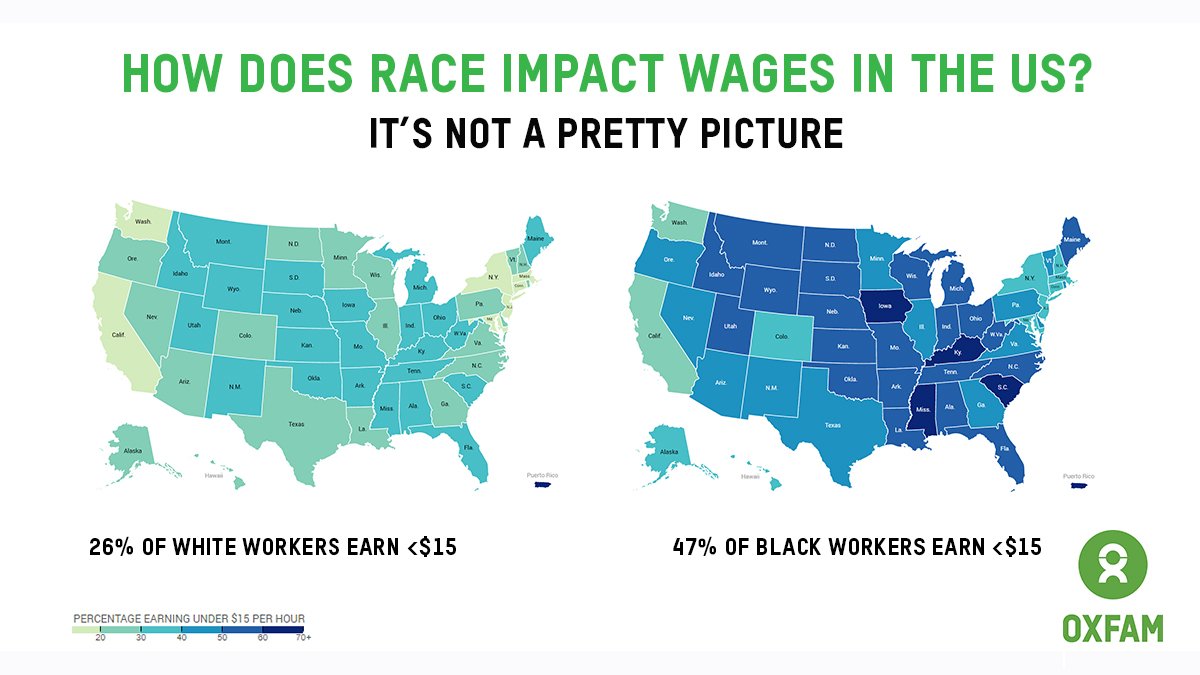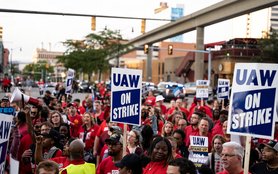More than 80 years ago, policymakers capitulated to the demands of racist Members of Congress and excluded millions of workers from federal labor law protections. The legacy of that decision endures to this day, resulting in a low-wage labor force that is disproportionately made up of women and people of color.
During the worst of the Great Depression, when seeking a way to lift millions of people in the United States out of poverty and hunger, Congress and the Roosevelt administration devised several policies aimed at creating a new social reality (often referred to as the New Deal). In 1938, President Roosevelt signed the Fair Labor Standards Act (FLSA)--which established, among other things, the country’s first federal minimum wage.
The purpose of this law--aside from raising the wages of many workers in the US to a more sustainable level--was to allow people to have buying power, and help support small businesses that were suffering during the Great Depression.
However, the creation of a minimum wage in the US through the FLSA was not equitable. In fact, many people were excluded from minimum wages and other protections when the law was created. In a compromise to white Southern senators who wanted to keep Black workers disenfranchised, President Roosevelt agreed to the exclusion of farmworkers, domestic workers, and restaurant workers. These sectors, overwhelmingly comprised of Black workers in 1938 (in the case of domestic workers, Black women), were excluded from the protections of minimum wages, overtime provisions, and protections against child labor.
Although the landscape of FLSA exclusions has changed significantly since 1938 (largely thanks to the hard work and organizing of workers and advocates), nearly one million workers are still paid a subminimum wage in this country.
Moreover, millions more are paid a tipped wage, with the assumption that business patrons will make up the difference between a tipped wage and minimum wage in gratitude for hard work. But relying on the goodwill of restaurant patrons and hotel patrons--especially in a now largely cashless economy--leaves many tipped workers earning well below even minimum wage standards, which equates legally to wage theft.
Only recently, in 2015, were minimum wages extended to direct care workers, a subcategory of domestic workers previously excluded, bringing minimum wage mandates to certified nursing assistants, home health aides, personal care aides, caregivers, and companions.
How this history shapes the current labor landscape
The racist and sexist legacy of who is and is not included in minimum wage laws is reflected even now. According to Oxfam’s newly released report on low wages, nearly 52 million workers in the US make less than $15 per hour, or less than $31,200 per year. And when considering race and gender, these numbers are staggering:
- 40 percent of working women make less than $15 an hour (compared to 25 percent of men)
- 50 percent of women of color make less than $15
- 46 percent of Hispanic/Latinx workers make less than $15 (compared to 26 percent of white workers)
- 47 percent of Black workers make less than $15
The result of the current federal minimum wage (which has not changed in 13 years, the longest Congress has gone without lifting the minimum wage since its creation in 1938)? Working poverty for countless families. Millions of people in the US are working but living in poverty and anxiety, a single lost paycheck away from despair.
What would be a starting point toward eradicating working poverty in the United States? Raising the minimum hourly wage for all workers to $15. We must also end subminimum wages as a policy and include all workers within the framework of minimum wage.
Although Oxfam does not consider $15 per hour to be a “living wage,” the long fight at the state and federal level for a $15 minimum wage is a starting point toward achieving true living wages, and created the threshold for our calculation of low-wage workers in the United States.
There are 51.9 million workers in the US earning less than $15 right now. This is not inevitable, nor is it fair. The time to act is now.
Explore the interactive low-wage map
Read the report: The crisis of low wages in the US




